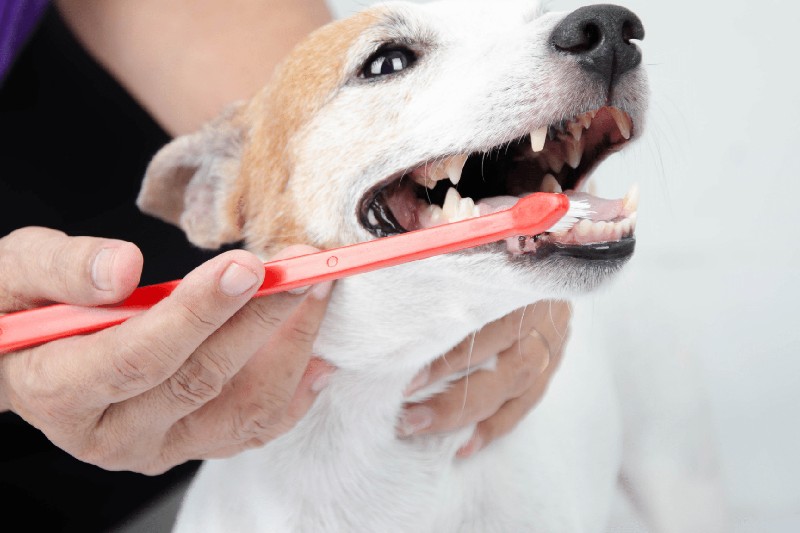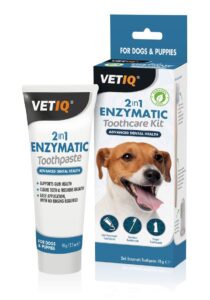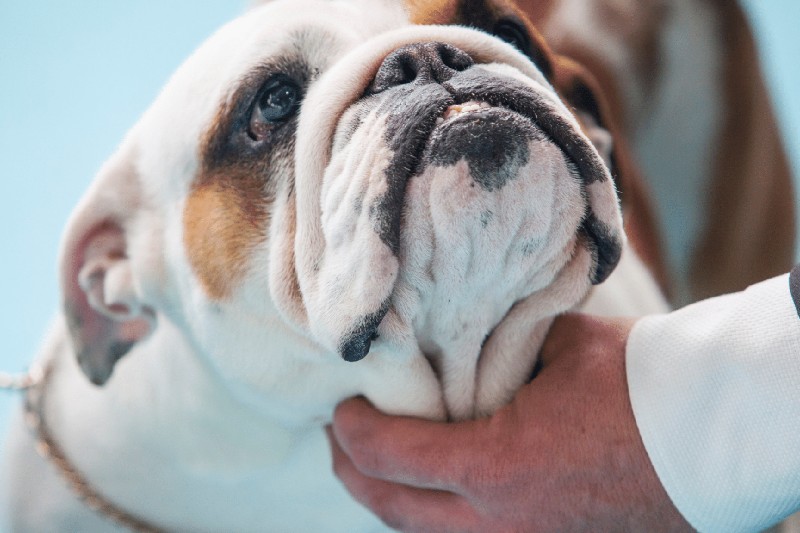When our pets are under the weather, it’s an anxious time. They may be off their food or simply seem a lot quieter than their usual energetic selves. Sometimes they may show obvious signs of a problem, which can be even more worrying for us as pet parents. A common example of this is bleeding gums.
What causes bleeding gums?
Bleeding gums often occur as a result of an infection of the teeth’s support structure. It can be caused for a number of reasons – some more serious than others.
If your dog has chewed on a sharp object that has caused trauma to the gums, they will need to be urgently examined by a vet in order to assess the wound and any damage.
Bleeding can also be caused by the ingestion of substances that are toxic to dogs, such as rat poison, chocolate or any other chemical agents stored around the house or garden. If you suspect your dog’s bleeding gums are caused by toxin poisoning, it is integral to seek advice from your vet immediately.
However, one of the leading causes of bleeding gums is periodontal disease.
What is periodontal disease?
Periodontal disease refers to the infection and inflammation of the gums due to a build-up of harmful bacteria. In the more advanced stages, the teeth and underlying bone can also be compromised.
While bleeding gums is one of the key signs of periodontal disease, there are other indicators that our pets may be suffering in silence, such as bad breath, missing teeth and blood-stained saliva.
This problematic disease is caused by the presence of bacteria in a dog’s mouth, which forms a coating of plaque on their teeth. If the plaque is not removed through regular brushing, it results in a build-up of tartar, which in turn causes inflammation of the gums. This is known as gingivitis and while the condition is reversible with the correct care, it can cause more serious problems if left untreated.
2 IN 1 ENZYMATIC TOOTHCARE KIT
A natural enzymatic toothpaste for dogs that freshens breath and helps manage plaque and oral bacteria and supports gum health & clean teeth. Easy to apply, no need for rinsing, and comes with a biodegradable bamboo toothbrush.
Aside from bleeding and inflamed gums, severe gingivitis can infiltrate the bloodstream and lead to complications of the major organs.
This tricky problem can be caused by factors such as breed, age and diet. However, the biggest threat to our dogs’ dental health is poor oral hygiene.
How do I treat bleeding gums caused by periodontal disease?
If your dog has bleeding gums, it is advisable to seek professional advice. While you may suspect periodontal disease to be the issue, it is advisable to rule out any underlying causes or perhaps injury caused by chewing on a sharp object.
Depending on the outcome of the visit, your dog’s course of treatment might include:
- A full scale and polish
- Closing up of a wound (if caused by injury)
- Nutritional advice and dietary recommendations
- Medication
- Surgical procedure
In order to avoid visits to the vet and an unhappy pup, it’s important to take preventative measures before reaching this point to ensure your dog’s oral regime is in tip-top shape.
How do I prevent bleeding gums?
Although we’d like to believe we know everything there is to know about being the best pet parent, many dog owners may not be as tuned in as they might like to believe – especially when it comes to important criteria such as dental hygiene.
With more than 80 percent of dogs over three suffering from active dental disease, it is certainly an area that we as pet owners may need to brush up on.
To stave off the painful side-effects of gum disease – and to avoid further complications in the process – it’s integral to create a thorough dental hygiene routine.
- By regularly brushing your dog’s teeth at least two to three times per week, you avoid a build-up of plaque that leads to the dreaded tartar. If you’re a puppy parent or are unfamiliar with the dos and don’ts of brushing for your pet, research tips and tricks that will make the process a comfortable experience for all involved.
- Human toothpaste can be toxic to dogs, so investing in dog-friendly products is a must for a complete and successful dental hygiene routine. From edible to chewable toothpaste, there is luckily a lot of choice available, allowing you to choose a product best suited to your pup.
- If you feel there is tartar present in some hard-to-reach areas, it might be advisable to book a professional cleaning, which would allow you to resume your cleaning routine with a clean slate.
- Specially formulated doggy treats can help to free your dog’s teeth of stubborn plaque between brushing, while also keeping their breath fresh.
- Breath freshener can be a lifesaver if your dog is suffering from halitosis. Choose a product that is easy to administer and contains bacteria-reducing ingredients.
As with any common health issue, it’s vital to alleviate the possible effects – or prohibit them from starting in the first place – by giving your dog’s health and hygiene regime the attention it deserves. Your happy pooch will thank you for it!
2 IN 1 ENZYMATIC TOOTHCARE KIT
A natural enzymatic toothpaste for dogs that freshens breath and helps manage plaque and oral bacteria and supports gum health & clean teeth. Easy to apply, no need for rinsing, and comes with a biodegradable bamboo toothbrush.
[/et_pb_text]
Sign up and win!
Be in with a chance to win a one in 10 prize for your pet by signing up to the Health for Pets Community!
Error: Contact form not found.
Please note, we do not spam. By signing up to our community you will receive our monthly emails with free resources and latest updates. For more information, see our privacy policy.






